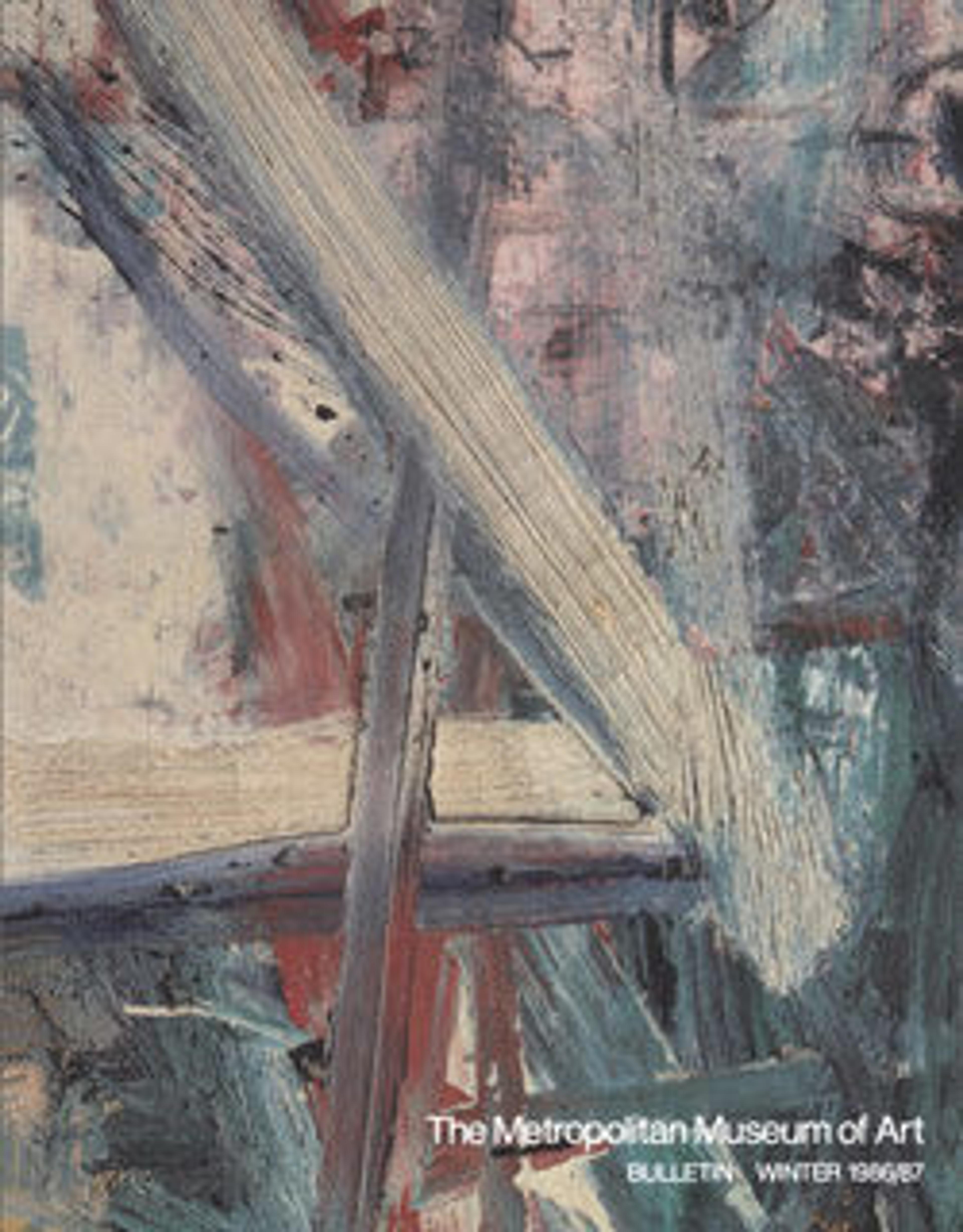Celia
A refugee from czarist Russia, where he was an officer in the cavalry regiment of Grand Duke Michael and in the footguard of Czar Nicholas, John Graham arrived in the United States in 1920, where he began his second career as an artist and critic. His early training at the Art Students League with such teachers as John Sloan and Kenneth Hayes Miller from 1922 to 1924 is in sharp contrast to his subsequent avant-garde association. He made frequent trips to Paris and became friendly with the Surrealist group there, although his style remained eclectic: while his figurative painting displayed affinities with Giorgio de Chirico and André Derain, he was also making small, purely abstract compositions that he called "minimalist."
In the early 1940s Graham underwent a radical philosophical transition, during which his belief in Marxism and psychoanalysis was replaced by more magical thinking. His taste for modernism shifted to the old masters, particularly those of the Renaissance. Celia was painted during these transitional years and is one of the many portraits of imaginary women dating from this time. In these paintings he achieved a monumental reinterpretation of classical art. Here, the calm and dignity of the lovely woman, her elegant silhouette, and her monumental solidity are reminiscent of ancient Roman portraiture, of Ingres, and of Raphael, while the forms, as well as the curious sense of detachment from place and time hint at biomorphic Surrealist sculpture. The tension between the figure and the flat pictorial structure belies Graham's avowed dismissal of modernism. He maintained that he gave his sitters staring (sometimes crossed) eyes not as an expressive device, "but as a means to anchor space to a point in the room, to create more tension...to make the figures immutable, fixed and timeless."
Graham was also an active collector and critic of contemporary art, and encouraged the careers of many young artists. In 1942 he organized an exhibition in which he combined the works of the great European modernists—Picasso, Braque, Matisse—with young unknown American expressionists, among them Willem de Kooning, Lee Krasner, and Jackson Pollock. It was the first exhibition for the latter two. Arshile Gorky and the sculptor David Smith were also among his friends and admirers.
In the early 1940s Graham underwent a radical philosophical transition, during which his belief in Marxism and psychoanalysis was replaced by more magical thinking. His taste for modernism shifted to the old masters, particularly those of the Renaissance. Celia was painted during these transitional years and is one of the many portraits of imaginary women dating from this time. In these paintings he achieved a monumental reinterpretation of classical art. Here, the calm and dignity of the lovely woman, her elegant silhouette, and her monumental solidity are reminiscent of ancient Roman portraiture, of Ingres, and of Raphael, while the forms, as well as the curious sense of detachment from place and time hint at biomorphic Surrealist sculpture. The tension between the figure and the flat pictorial structure belies Graham's avowed dismissal of modernism. He maintained that he gave his sitters staring (sometimes crossed) eyes not as an expressive device, "but as a means to anchor space to a point in the room, to create more tension...to make the figures immutable, fixed and timeless."
Graham was also an active collector and critic of contemporary art, and encouraged the careers of many young artists. In 1942 he organized an exhibition in which he combined the works of the great European modernists—Picasso, Braque, Matisse—with young unknown American expressionists, among them Willem de Kooning, Lee Krasner, and Jackson Pollock. It was the first exhibition for the latter two. Arshile Gorky and the sculptor David Smith were also among his friends and admirers.
Artwork Details
- Title:Celia
- Artist:John Graham (American (born Ukraine), Kiev 1881–1961 London)
- Date:ca. 1944
- Medium:Oil, casein, charcoal, chalk, graphite, and ink on Masonite
- Dimensions:48 × 36 in. (121.9 × 91.4 cm)
- Classification:Paintings
- Credit Line:Hugo Kastor Fund, 1968
- Object Number:68.185
- Curatorial Department: Modern and Contemporary Art
More Artwork
Research Resources
The Met provides unparalleled resources for research and welcomes an international community of students and scholars. The Met's Open Access API is where creators and researchers can connect to the The Met collection. Open Access data and public domain images are available for unrestricted commercial and noncommercial use without permission or fee.
To request images under copyright and other restrictions, please use this Image Request form.
Feedback
We continue to research and examine historical and cultural context for objects in The Met collection. If you have comments or questions about this object record, please contact us using the form below. The Museum looks forward to receiving your comments.
